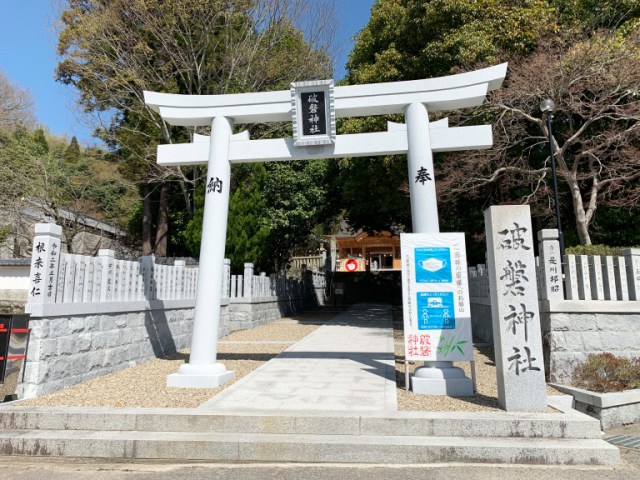
This shrine’s anime-level boulder has an anime-level backstory.
One of the cool things about Japan is that looking at the names of places gives you a sense of their history or distinguishing characteristics. “Tokyo,” for example, famously means “eastern capital,” because it’s located at the eastern end of the country, and its “Ginza” district means “silver seat,” a nod to the mint that used to be located in the neighborhood.
And then there’s Haban Shrine, whose name means “destroyed rock.”
But it was more than just linguistic curiosity that had our Japanese-language reporter Seiji Nakazawa intrigued. Having heard that the shrine has a split boulder, or wareiwa, he was instantly reminded of the scene in Demon Slayer: Kimetsu no Yaiba where hero Tanjiro slices through a rock with his katana, and felt compelled to make the trip out to Himeji, in Hyogo Prefecture, to visit Haban Shrine for himself.
Now, hearing “Himeji,” most people first envision Himeji Castle, in the developed city center where the Shinkansen bullet train stops. Haban Shrine, though, is in the rural outskirts of the town, near Oichi Station on the Kishin Line. Even though it’s only about a 15-minute ride from Himeji Station, the surroundings are pure countryside.
The shrine’s torii gate is visible from the platform, and just a five-minute walk away, so Seiji strolled right over.
Rustic as the scenery may be, the shrine itself is remarkably well maintained, with a picturesque stone path and shrine hall. The principal deity enshrined here is Sugawara no Michizane, also known as Tenjin, the god of learning, so Seiji paused to say a quick prayer in hopes of boosting his mental capacity.
However, Seiji couldn’t spot the split boulder anywhere, so he headed over to one of the buildings where a miko (shrine maiden) was posted to ask where it was. He then learned that Haban Shrine’s wareiwa isn’t actually on the shrine grounds, but elsewhere in town. The miko did give him a map that showed its location, though.
▼ Haban Shrine (red), Oichi Station (blue) and wareiwa (green)
“Ah, OK, just back over the railroad tracks, and two signal lights away,” thought Seiji. “No sweat.”
However, Seiji had momentarily forgotten that he wasn’t in Tokyo anymore, and “two blocks” is a much longer distance in the country than it is in the city, and the walk ended up taking close to half an hour. Still, it was nice to take in some wide-open views, and he had audio accompaniment from the warblers calling out from the trees around town.
Eventually, he got to the second signal light, which looks like a T-intersection at first glance, but actually has another small street that leads down a slope.
Go down that path, and after a while you’ll spot a sign for the split boulder (われ岩) on your right side. Hang a right at the sign, and from there it’s straight on into the foothills…
…and through a bamboo grove…
…until you see the wareiwa!
Wrapped around the boulder is a braided shimenawa purification rope, and running from top to bottom is a deep gash that cleaves the stone in two in its upper section.
▼ Seiji, with his hair still showing signs of his Kyojuro Rengoku makeover, snapped a photo with the Demon Slayer-like rock.
But of course, Haban Shrine, is much, much older than Demon Slayer, which made its manga debut in 2016, so obviously this wasn’t Tanjiro’s handiwork. So if the shrine’s boulder wasn’t split by swordsman Tanjiro, who was it split by?
According to local legends, by Empress Jingu, who is thought to have ruled Japan nearly two millennia ago, from 201 to 269.
The story goes that after Jingu’s husband, the Emperor Chuai, was killed by rebels, the empress took brutal vengeance upon them. Grabbing a bow, she fired a hail of arrows at the rebel forces, and her third shot hit the Haban Shrine boulder with such force that it tore a vertical chunk out of it.
Empress Jingu didn’t need a blade to slice up a boulder, and as Seiji left, he couldn’t help thinking Demon Slayers demons would have been slayed a lot more quickly had she been part of its band of heroes.
Photos © SoraNews24
● Want to hear about SoraNews24’s latest articles as soon as they’re published? Follow us on Facebook and Twitter!
[ Read in Japanese ]